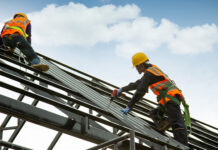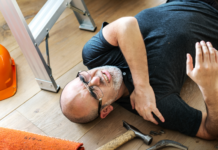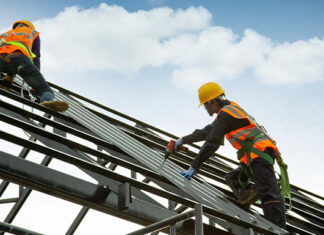When diagnosing a slip-and-fall problem within an organization, various factors may be affecting the level of risk. Floor cleaning, while usually not overlooked completely, is often not given enough attention. Most assess only the frequency with which floors are swept and mopped but completely ignore the efficiency of their cleaning process.
Let’s take a look at an example from the restaurant industry. A study that tested the effectiveness of the cleaning procedures employed by ten restaurant establishments found seven out of the ten restaurants used neutral cleaners rather than alkaline degreasers, which tend to be more efficient at removing the oils and greases so commonly found on the floors of commercial kitchens. The three restaurants that were using the more effective degreasers were found to be over-diluting the product, reducing its efficiency at breaking down and removing targeted contaminants. Additionally, as is unfortunately all too common in the food industry, each of the restaurants utilized a single-step mopping method. This tends to spread contaminants around the floor and leave a residue that makes any subsequent liquid spill substantially more slippery than it would be otherwise.
All ten restaurants had opportunities to improve the friction of their flooring by altering their cleaning procedures. The researchers found that over-diluting a degreaser and single-step mopping quarry tile contaminated with oil yielded a coefficient of friction of .37, making it a designated low-traction surface per the standard. Under the same conditions, two-step mopping with the degreaser mixed to the manufacturer’s recommended concentration produced a coefficient of .77, well above the threshold for a surface to be designated as high traction.
Consider that another restaurant study found that for each .1 decrease in the coefficient of friction, the rate of slipping increased by 21 percent. A restaurant over-diluting its degreaser and single-step mopping could reduce its rate of slipping by 84 percent by making two minor adjustments to its cleaning process!
Here are three tips for enhancing the efficiency of your floor cleaning process:
- Select the right cleaner for the job
Is your cleaner designed for the contaminants present in your workplace?
- Follow manufacturer guidelines
Manufacturers provide usage guidelines for their products to optimize their efficiency. Ignoring them can lead to wasted product at best and reduced floor traction at worst.
- Establish high-efficiency application/removal procedures
For more heavily soiled environments, deck brushes, floor scrubbing machines, and/or hoses may be needed to effectively loosen and completely remove contaminants.
For more information on preventing slips and falls, please visit ICW Group’s workers’ compensation Policyholder Center.

















